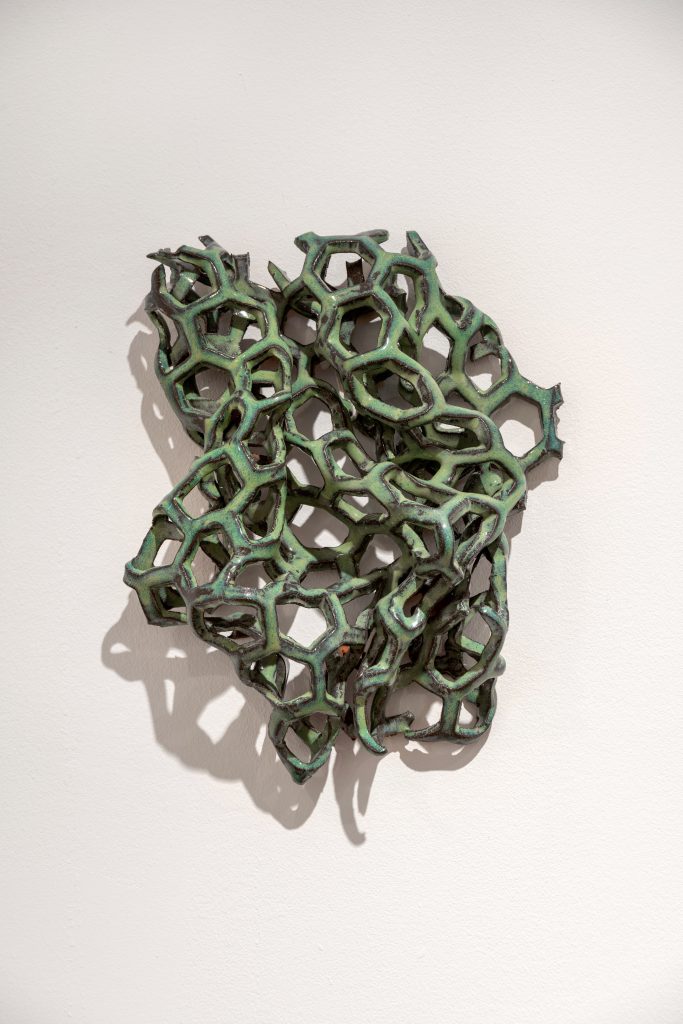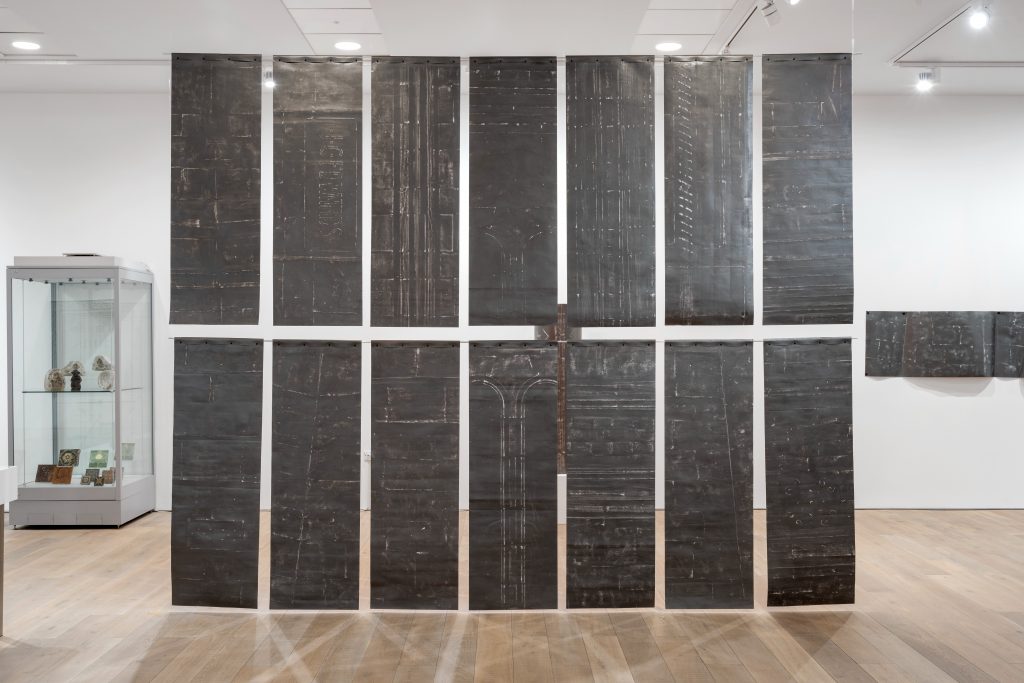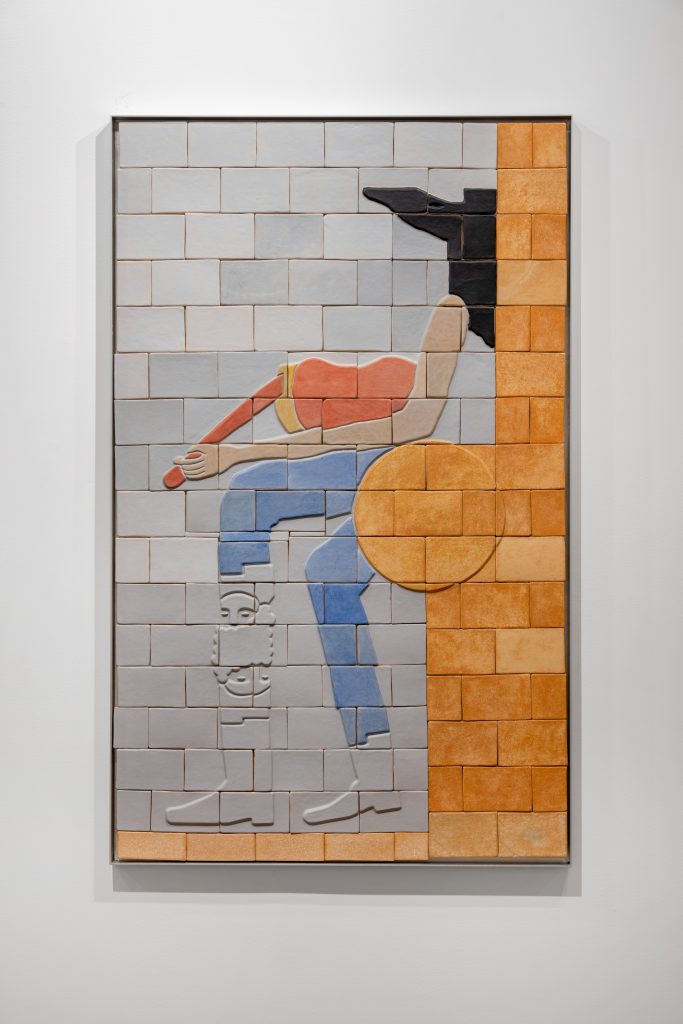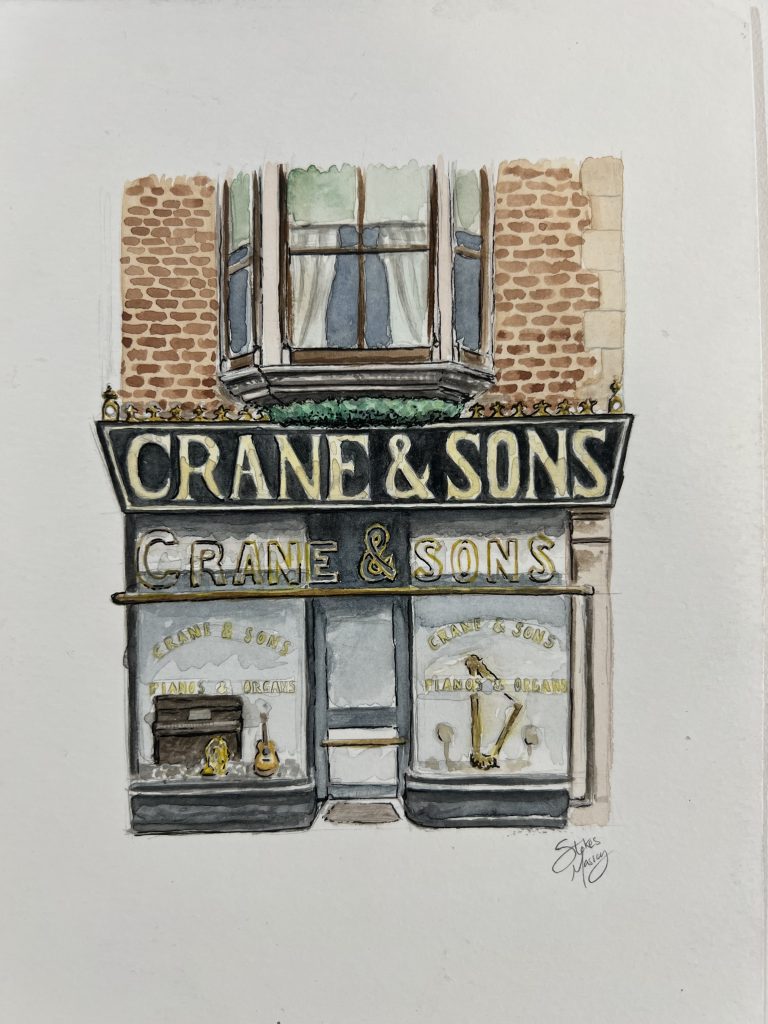Terracottapolis – Meet the Artists
Our Terracottapolis exhibition includes contemporary pieces along historical objects – find out more about some of the featured artists and how they use terracotta in their work.
Paul Eastwood

Paul Eastwood treats art as a form of material storytelling. He creates imagined histories and futures to investigate how spaces, artefacts, and memory communicate identities. For Terracottapolis he is showing a selection of ceramic works from the last seven years as well as two new sculptures
Can you tell me a bit about your connections to Wrexham?
I was born and raised in Wrexham, studying at Ysgol Morgan Llwyd and Yale Collage and later studied at Wimbledon School of Art and The Royal Academy Schools. I now live and work in Wrexham, having a studio at Periclo studios, Rhosrobin.
What do you like or find interesting about terracotta as a material?
The word derives from Italian terra cotta ‘baked earth’, from Latin terra cocta. There is an abundance of this material. I’m interested in its widespread uses in human civilisation (pre-history to the present) and its uses among all social classes. It’s a democratic material.
What are its unique qualities and how do you work with it?
In my work I use slab building techniques as these are direct and instant, there is no need to build complicated moulds which slows and complicates the making process. Even with complicated forms, such as the busts I am currently making, there is an immediacy working directly into clay; its picks up all manners of mark making.
Could you share a bit about your pieces in the exhibition and what inspired them?
A clay mesh laced with rings preserves only the outline of shapes; an overflowing ashtray hints at long conversations. I am interested in capturing fleeting or lost moments. My other contribution to the exhibition is a display of pottery fragments, that I collected from local riverbeds during the Covid lockdowns. They present the area’s industrial history alongside a speculative narrative: how did these objects get there? Who used them, and for what? What was their original appearance before they were broken and softened by the water?
Lesley James

Lesley James lives and works in North Wales. She is interested in surface traces, form, and in the physical and invisible barriers we create.
What are your connections to Wrexham and Tŷ Pawb?
I have been teaching in Wrexham within the FE art sector for over 30 years. in 2018 I won 1st prize at the Tŷ Pawb Open Art exhibition and was commissioned to produce new work for the exhibition celebrating the rich brick, tile and terracotta heritage of the Wrexham and Ruabon areas.
What do you like or find interesting about terracotta as a material?
The term terracotta is derived from the Latin for ‘baked earth’ and my project was concerned with the notion that the clays of the area are the earth, and the bricks and terracotta made from them are therefore truly a material of that place. That ‘place’ then is transported away and used in construction but they retain the essential materiality from where they came.
What are its unique qualities and how do you work with it?
I was supported by Arts Council Wales with a grant for research and development and visited and made paper rubbings onsite of four landmark buildings across the country all made using terracotta from the same Ruabon manufacturer J.C.Edwards. A rubbing produces a facsimile of the surface, that surface created out of the clays, the ‘place’ of northeast Wales. On the reverse of that same paper, I have then made a rubbing of what remains of walls on the two J.C.Edwards sites at Trefynant and Penybont, either side of the villages of Cefn Mawr and Acrefair, just south of Ruabon. Very little remains now of the extensive works, most of which have long since been demolished.
Could you share a bit about your pieces in the exhibition and what inspired them?
Another strand of research was discovering individuals stories about the J.C. Edwards works. The rubbings are large, the largest individual pieces being 1.5m x 3 metres in size. Some stand as free-standing pieces straddling a line between drawings and sculpture. Another is wall based but follows the shape of the architecture it was formed around. The biggest work is a ‘wall’ of 14 individual pieces created from details from 3 of the landmark buildings.
I have been told some lovely stories from people connected to the area and the Pierhead in Cardiff. One said that he used to touch the Pierhead building when he passed on his way to work because his great taid (Welsh for great grandfather) worked at the J.C. Edwards site at the time it was being built in the late 1890’s. He hoped that maybe his great taid had touched those pieces of terracotta too, before sadly drowning in the nearby Pontcysyllte aqueduct in 1903. Another said that had she known that the Pierhead had been built with J.C.Edwards materials, she too would have touched it: “It would have felt like touching a piece of home, a piece of ‘the Cefn.” (Cefn Mawr the site of the brickworks).
I love this personal attachment; real people handled the materials of home, of ‘place’, and had that instinct to want to touch what they touched. The two sides of the paper bring the surfaces of the distant buildings back together. Each one a document, the surfaces holding the memories of the people and the ‘place’ rejoined.
Renee So

Renee So is a Hong Kong born artist, currently based in London. For the exhibition she is showing some recent tile relief works.
What do you like or find interesting about terracotta as a material?
I like its widespread usage and historical timeline. As a material, it was used all around the world from prehistoric times right up to the present day, and it remains unchanged. I love the colour and its association with the earth under our feet.
What are its unique qualities and how do you work with it?
Its colour is the most unique aspect, and I prefer it unglazed for that reason. I handcoil it for my sculptures and slabroll* it for my tiles. It has a nice feel to it when you work it with your hands
Could you share a bit about your pieces in the exhibition and what inspired them?
“Guitar” and “Relaxation” are low-relief tiled pictures inspired by the Ishtar Gates of Babylon and decorative tiles used in public spaces such as train stations and pub and hotel exteriors. Each tile is rolled, contoured and glazed individually and then assembled together like a jigsaw puzzle which is when I get to see the final image for the first time.
A slab roller is a piece of equipment that rolls out uniform slabs of clay which can then be used for hand-building
Liam Stokes-Massey

Liam Stokes-Massey is an illustrator who has been a full time artist since 2014. Having started out working in traditional media he’s recently begun to apply his skills to the world of digital art.
What are your connections to Wrexham and Tŷ Pawb?
I was born and raised in Wrexham, having moved away to Cardiff briefly and then returned. I have been a part of Tŷ Pawb since 2019, where I use the Shepherd’s Hut as a studio.
What do you like or find interesting about terracotta as a material?
I love the distinctiveness and the workability of terracotta. Some of the designs I’ve seen so far are beautifully detailed and intricate. The fact that it is unique to our area is also wonderful.
Could you share a bit about your pieces in the exhibition and what inspired them?
The pencil and watercolour illustrations I created for the exhibition are inspired by some of my favourite pieces of architecture and design to be found around the town centre. Not all are terracotta pieces but they all possess a wonderful level of craftsmanship – something I love to capture.
www.pencilcraftsman.com




